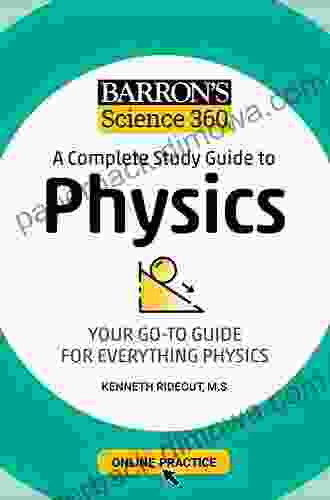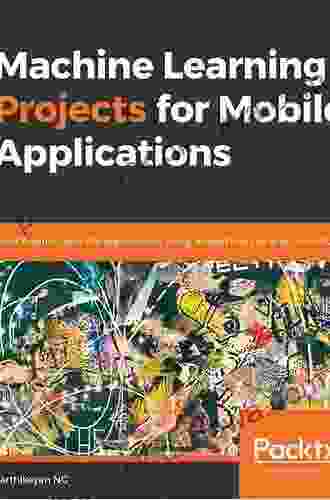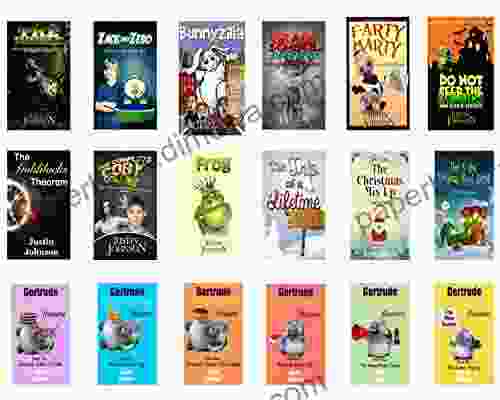Build Android and iOS Applications Using TensorFlow Lite and Core ML: A Comprehensive Guide for Developers

Machine learning (ML) is rapidly transforming the way we interact with technology. From powering intelligent assistants to detecting fraud, ML is making a significant impact in various industries. However, developing and deploying ML models on mobile devices can be challenging.
TensorFlow Lite and Core ML are powerful frameworks that enable developers to deploy ML models on mobile devices. TensorFlow Lite is a lightweight version of TensorFlow, specifically optimized for mobile and embedded devices. Core ML, on the other hand, is Apple's framework for deploying ML models on iOS devices.
5 out of 5
| Language | : | English |
| File size | : | 24327 KB |
| Text-to-Speech | : | Enabled |
| Screen Reader | : | Supported |
| Enhanced typesetting | : | Enabled |
| Print length | : | 246 pages |
In this comprehensive guide, we will delve into the concepts of TensorFlow Lite and Core ML, and provide step-by-step instructions on how to build Android and iOS applications using these frameworks. We will cover topics such as:
* Understanding the TensorFlow Lite and Core ML frameworks * Converting ML models into mobile-compatible formats * Integrating TensorFlow Lite and Core ML into mobile applications * Optimizing ML models for mobile devices * Troubleshooting common issues
Whether you're a seasoned developer or just starting your journey into mobile ML, this guide will equip you with the knowledge and skills you need to build powerful and efficient ML-powered mobile applications.
Chapter 1: Understanding TensorFlow Lite and Core ML
This chapter provides a comprehensive overview of TensorFlow Lite and Core ML, covering their architecture, features, and use cases. We will discuss the strengths and limitations of each framework, and help you choose the best option for your specific project requirements.
1.1 TensorFlow Lite
TensorFlow Lite is a lightweight version of TensorFlow, optimized for mobile and embedded devices with limited resources. It offers a range of features specifically tailored for mobile development, including:
* Quantization: Converts floating-point models into integer-valued models, significantly reducing model size and computational cost. * Pruning: Removes redundant or less important weights from the model, further reducing model size and computational overhead. * Delegate support: Allows developers to leverage specialized hardware accelerators, such as GPUs and NPUs, for enhanced performance.
1.2 Core ML
Core ML is Apple's framework for deploying ML models on iOS devices. It provides a unified interface for working with a variety of ML models, including those trained using TensorFlow, PyTorch, and Caffe. Core ML offers features such as:
* Model optimization: Automatically optimizes models for performance and efficiency on Apple devices. * Metal integration: Leverages Apple's Metal graphics framework for accelerated ML inference. * Neural Engine support: Provides access to the dedicated Neural Engine on Apple's A-series chips for maximum performance.
Chapter 2: Converting ML Models for Mobile
In this chapter, we will guide you through the process of converting your ML models into mobile-compatible formats for use with TensorFlow Lite and Core ML. We will cover techniques such as quantization, pruning, and model optimization, ensuring that your models are optimized for performance and efficiency on mobile devices.
2.1 Quantization
Quantization is a technique used to reduce the precision of floating-point model weights and activations to integer values. This can significantly reduce model size and computational cost, making models more suitable for mobile devices.
TensorFlow Lite and Core ML provide built-in support for quantization. We will demonstrate how to quantize your models using these frameworks, and discuss the trade-offs involved in choosing different quantization methods.
2.2 Pruning
Pruning is another technique used to reduce model size and computational overhead. It involves removing redundant or less important weights from the model.
Pruning can be applied to models trained using TensorFlow or PyTorch. We will discuss various pruning algorithms and provide instructions on how to implement them using popular ML libraries.
2.3 Model Optimization
In addition to quantization and pruning, Core ML offers a range of model optimization techniques to further enhance performance and efficiency. These techniques include:
* Core ML Performance Hints: Provides developers with fine-grained control over how Core ML optimizes models for specific performance requirements. * Metal Integration: Leverages Apple's Metal graphics framework for accelerated ML inference. * Neural Engine Support: Utilizes the dedicated Neural Engine on Apple's A-series chips for maximum performance.
We will demonstrate how to use these optimization techniques to improve the performance of your ML models on iOS devices.
Chapter 3: Integrating TensorFlow Lite and Core ML into Mobile Applications
In this chapter, we will dive into the practical aspects of integrating TensorFlow Lite and Core ML into your Android and iOS applications. We will provide detailed instructions on how to:
* Load and initialize TensorFlow Lite and Core ML models * Perform ML inference on mobile devices * Display ML results and visualizations * Handle real-time user interactions
We will also cover best practices for efficient ML integration, including tips on optimizing performance and managing memory usage.
3.1 Android Integration
We will guide you through the process of integrating TensorFlow Lite into your Android applications, using both Java and Kotlin. We will cover topics such as:
* Adding TensorFlow Lite to your Android project * Loading and initializing TensorFlow Lite models * Performing ML inference and displaying results * Optimizing TensorFlow Lite integration for performance and efficiency
3.2 iOS Integration
We will also provide detailed instructions on how to integrate Core ML into your iOS applications, using Swift. We will cover topics such as:
* Adding Core ML to your iOS project * Loading and initializing Core ML models * Performing ML inference and displaying results * Optimizing Core ML integration for performance and efficiency
Chapter 4: Troubleshooting Common Issues
In this chapter, we will address common issues and challenges that developers may encounter when working with TensorFlow Lite and Core ML. We will provide practical solutions and troubleshooting tips to help you resolve these issues efficiently.
4.1 TensorFlow Lite Issues
We will cover common issues related to TensorFlow Lite integration, performance, and model conversion. We will provide solutions to problems such as:
* Model quantization errors * Low model accuracy after quantization * Performance bottlenecks during ML inference * Errors related to delegate support
4.2 Core ML Issues
We will also address common issues related to Core ML integration, performance, and model compatibility. We will provide solutions to problems such as:
* Unsupported ML model formats * Model optimization errors * Performance issues related to Neural Engine utilization * Errors related to Metal integration
In this comprehensive guide, we have explored the concepts, techniques, and practical aspects of building Android and iOS applications using TensorFlow Lite and Core ML. We have provided step-by-step instructions, code examples, and troubleshooting tips to empower developers of all levels to create powerful and efficient ML-powered mobile applications.
As ML continues to revolutionize the mobile ecosystem, TensorFlow Lite and Core ML will play a crucial role in bringing the power of ML to mobile devices. By leveraging the knowledge and skills shared in this guide, developers can unlock the potential of ML and create groundbreaking mobile applications that shape the future of technology.
We encourage you to explore the accompanying code samples and resources to further your understanding and practical implementation of TensorFlow Lite and Core ML. With dedication and continuous learning, you can become a proficient developer of ML-powered mobile applications that make a positive impact in the world.
5 out of 5
| Language | : | English |
| File size | : | 24327 KB |
| Text-to-Speech | : | Enabled |
| Screen Reader | : | Supported |
| Enhanced typesetting | : | Enabled |
| Print length | : | 246 pages |
Do you want to contribute by writing guest posts on this blog?
Please contact us and send us a resume of previous articles that you have written.
 Book
Book Novel
Novel Page
Page Chapter
Chapter Text
Text Story
Story Genre
Genre Reader
Reader Library
Library Paperback
Paperback E-book
E-book Magazine
Magazine Newspaper
Newspaper Paragraph
Paragraph Sentence
Sentence Bookmark
Bookmark Shelf
Shelf Glossary
Glossary Bibliography
Bibliography Foreword
Foreword Preface
Preface Synopsis
Synopsis Annotation
Annotation Footnote
Footnote Manuscript
Manuscript Scroll
Scroll Codex
Codex Tome
Tome Bestseller
Bestseller Classics
Classics Library card
Library card Narrative
Narrative Biography
Biography Autobiography
Autobiography Memoir
Memoir Reference
Reference Encyclopedia
Encyclopedia Kenji Oka
Kenji Oka Karina Barbara Pawlak
Karina Barbara Pawlak Michael Chinery
Michael Chinery Daniel S Pierce
Daniel S Pierce Sheri Elam Gonzales
Sheri Elam Gonzales Mark J Price
Mark J Price Kathleen Saville
Kathleen Saville Kathryn Sutherland
Kathryn Sutherland Kal Spriggs
Kal Spriggs Lisa Rusczyk
Lisa Rusczyk Kelly Yang
Kelly Yang Simon Rogers
Simon Rogers Kalie Kelch
Kalie Kelch Lyn Gardner
Lyn Gardner Kenneth B Kahn
Kenneth B Kahn Kpakpundu Ezeze
Kpakpundu Ezeze Kate Fletcher
Kate Fletcher Scholasticah Mwangi
Scholasticah Mwangi Mark Hatmaker
Mark Hatmaker Vivien Tse
Vivien Tse
Light bulbAdvertise smarter! Our strategic ad space ensures maximum exposure. Reserve your spot today!

 Harrison BlairSee Love Life Through My Lens: A Journey of Heartfelt Discovery for Children
Harrison BlairSee Love Life Through My Lens: A Journey of Heartfelt Discovery for Children
 Dashawn HayesTouching Memoir About Intercountry Adoption In Vietnam And Unconditional Love
Dashawn HayesTouching Memoir About Intercountry Adoption In Vietnam And Unconditional Love Hudson HayesFollow ·18.4k
Hudson HayesFollow ·18.4k Wade CoxFollow ·12k
Wade CoxFollow ·12k Max TurnerFollow ·3.8k
Max TurnerFollow ·3.8k Roland HayesFollow ·6.1k
Roland HayesFollow ·6.1k Caleb LongFollow ·7.9k
Caleb LongFollow ·7.9k Lord ByronFollow ·4.6k
Lord ByronFollow ·4.6k Kirk HayesFollow ·9.8k
Kirk HayesFollow ·9.8k Oscar WildeFollow ·4.7k
Oscar WildeFollow ·4.7k

 Reginald Cox
Reginald CoxUnlocking the Secrets of Corporate Finance: Explore the...
In the ever-evolving world of business, a...

 David Peterson
David PetersonUncover the Depths of Steinbeck's 'Of Mice and Men' with...
Unlock New Insights and Conquer Your Exams ...

 John Keats
John KeatsUnveiling the Heart-Tugging Memoirs of Soldier Friend: A...
Step into the extraordinary world of...

 Chad Price
Chad PriceUnlock Physics Mastery with Barron's Comprehensive Study...
Elevate your physics...

 Dave Simmons
Dave SimmonsEinstein Had It Part Lxxxii: Half Spin Hydrogen
In the realm of...
5 out of 5
| Language | : | English |
| File size | : | 24327 KB |
| Text-to-Speech | : | Enabled |
| Screen Reader | : | Supported |
| Enhanced typesetting | : | Enabled |
| Print length | : | 246 pages |










